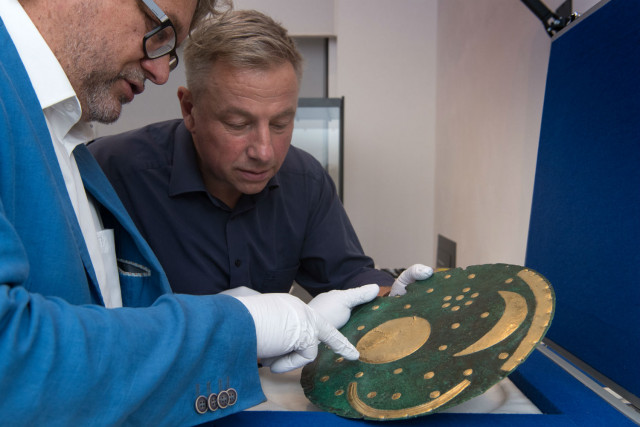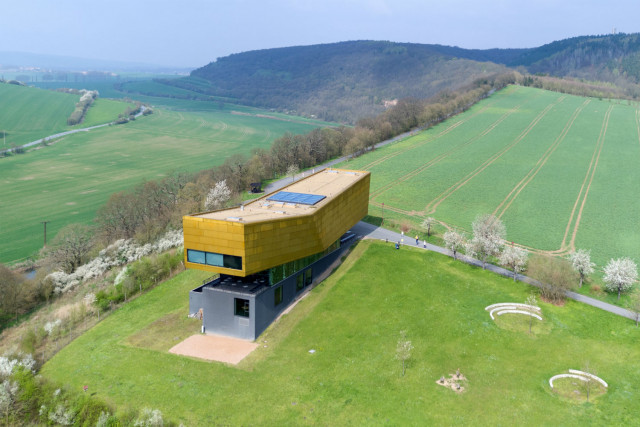The news was confirmed by Professor Harald Meller of the Museum for Pre-History in Halle (Saale) on Friday, in an interview relating to the 20th anniversary of the find.
Discovered in July 1999 by metal detectorists working illegally on the Mittelberg, near the town of Nebra in the state of Saxony-Anhalt, the Sky Disk, or 'Himmelschiebe', is the earliest confirmed depiction of the night sky.

Harald Meller (l), Saxony-Anhalt's state archeologist, and Matthias Wemhoff, Director of the Berlin Museum for Prehistory and Early History, take a look at the Nebra Sky Disk in the Martin-Gropius-Bau before it goes on display with 1,000 impressive artifacts found throughout Germany. Photo: DPA
Made from bronze, with gold adornments, it is believed to have been used to align the solar and lunar calendars, and provide an accurate guide for the planting of crops for the people of the Bronze Age Únětice Culture, who created the disk around 3,800 years ago.
The depiction of the sun, new moon and the constellation Pleaides, among a number of other stars, demonstrates an understanding of astronomy shared by the ancient Egyptians and Babylonians.
It is thought the disk was in use, and modified by people living in the region for over 200 years before being ritually deposited in a hoard stop the Mittelberg.
Weighing in at around 2.3 kilograms, the Disk was the subject of a sensational sting operation – involving Professor Meller – to recover it from black marketeers in February 2002.
Today the disk is on show at the Museum for Pre-History in Halle (Saale), situated in eastern Germany near Leipzig. It drew huge crowds when it first went on display, just over 15 years ago.

The Nebra visitor centre in Saxony-Anhalt. Photo: DPA
State government sources suggest that the Disk has been responsible for a €24 million boost to the local economy over the last 20 years
In addition to the disk's display in Halle, a multi-million euro interpretive centre, the 'Arche Nebra', has opened near the site of the find, attracting thousands of visitors annually.
Learn more about the history of the Nebra Sky Disk here.



 Please whitelist us to continue reading.
Please whitelist us to continue reading.
Member comments